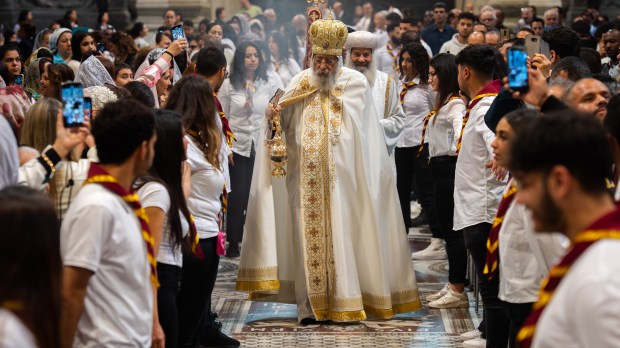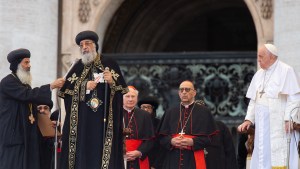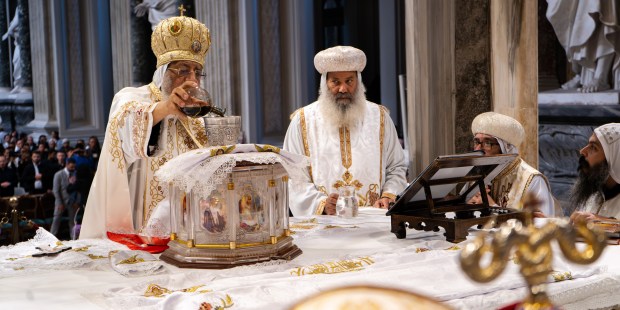This May 14, the leader of more than 10 million faithful in Egypt celebrated Divine Liturgy (Mass) in the pope’s cathedral, the Basilica of Saint John the Lateran, for the Coptic faithful.
The event is part of Tawadros II’s special visit to Rome to mark the 50th anniversary of the first meeting between a pope and a Coptic Orthodox patriarch, 15 centuries after the separation of Chalcedon.
Relations between the two Churches had begun to warm with the Second Vatican Council, where Coptic observers were present. In 1968, Patriarch Cyril VI invited Paul VI to go to Cairo for the inauguration of the new Coptic cathedral. Paul VI could not go, but on that occasion he returned relics of Saint Mark which had been taken from the Copts in the 9th century by Venetian merchants. This gesture marked a new era in the relationship between the two Churches.
In 1973, when we were celebrating the 1,600th anniversary of the death of Saint Athanasius of Alexandria, Paul VI invited the young Patriarch Shenouda to Rome. They signed a Christological agreement which put an end to the controversy born around the Council of Chalcedon and which had led to a rupture between Rome and many Eastern Churches, including the Copts.
This joint declaration of 1973 underlined that the faithful indeed shared the same faith in Christ, true God and true man. This historic agreement then served as a model for other Churches – Syriac, Armenian, Syro-Malankara, etc.
In addition to the liturgy today, Pope Tawadros led the general audience last Wednesday.
A crowning moment of his visit was when Pope Francis announced that the 21 martyrs killed by ISIS will be venerated by the Catholic Church as well.
As the Catechism explains, the Eastern Churches still have the sacraments of the priesthood and the Eucharist, meaning they have the Real Presence of Jesus in the Eucharist.
1399 The Eastern churches that are not in full communion with the Catholic Church celebrate the Eucharist with great love. “These Churches, although separated from us, yet possess true sacraments, above all – by apostolic succession – the priesthood and the Eucharist, whereby they are still joined to us in closest intimacy.” A certain communion in sacris, and so in the Eucharist, “given suitable circumstances and the approval of Church authority, is not merely possible but is encouraged.”
Here are images from today’s Liturgy:



